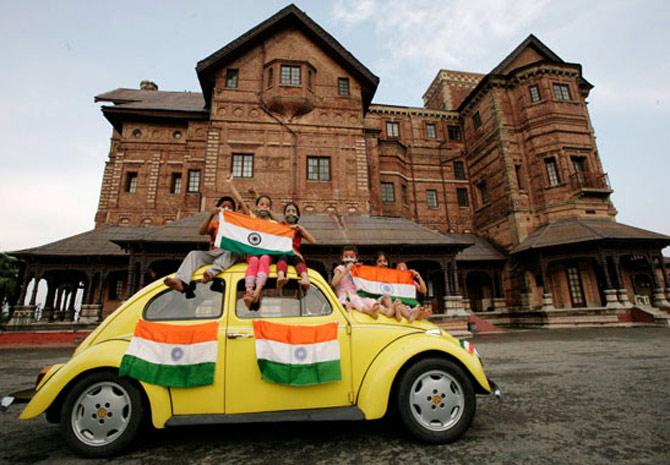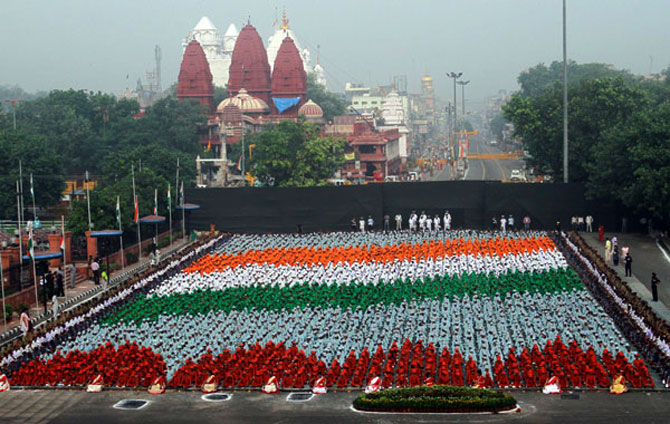
The ongoing economic travails in India arise from a combination of severe macroeconomic difficulties and a sharp deceleration in the trend rate of economic growth, say Devesh Kapur and Arvind Subramanian.
Macroeconomic difficulties originate in the unsustainability of the redistribution agenda - reflected in high fiscal deficits, which have led to high inflation and widening current account imbalances.
The Indian growth model, emphasising skill-intensive services at the expense of unskilled labour-intensive manufacturing, may be running out of steam because the skilled are scarce and the unskilled are underemployed in low-productivity occupations.
Against this backdrop, the Bhagwati-Sen debate rages within India. Redistribution or growth seems to be the critical question.
The protagonists and their acolytes focus on the differences in objectives. The mediators argue that the differences are less stark and pertain more to emphasis and policies.
But to us, both sides miss the crucial importance of state capacity even in attaining their own objectives. Consider how.
To the inclusionistas, we would ask at least three sets of questions. First, how can an already enfeebled, leaking and corrupt state take on additional burdens to fulfil the legitimate objectives that they embrace?
More food can hardly be distributed effectively when the existing public distribution system does not work where it is most needed. The right to education cannot be honoured if teachers do not show up in schools and the non-shows never pay the consequences.
Second, how can we create an entitlement state without this state acquiring legitimacy from providing public goods such as literacy, public health, law and order and physical connectivity?
As Indira Rajaraman insightfully pointed out in these pages, the "entitlement state in Europe came well after governments had delivered on their core role as providers of public goods". A welfare state superstructure built without that foundation will be inherently unstable.
...

Third, isn't a corrupt and arbitrary state even more of a problem for the weak and downtrodden? The well-off can buy their way out - gated communities, private schools, private security guards and payoffs. But the poor cannot.
The harassment and humiliations of the powerless by the very people charged with their well-being will only change when state functionaries are held much more accountable - something that has not been a priority for the inclusionistas.
For the growthistas, the way forward is reforms - which would deliver growth, which would, in turn, finance redistribution. For the growthistas, reforms have a strong deregulatory emphasis, namely to reduce the overweening role of the state: reform labour and bankruptcy laws, liberalise trade and foreign direct investment, privatise the public sector, and so on.
Necessary as some of these reforms may be, this camp inadequately appreciates and emphasises the positive things that the state needs to do to facilitate growth by reinvigorating private investment, especially in manufacturing.
First, just how will business overcome the decrepit and arbitrary machinery of law and order, which raises transaction costs of doing business and heightens uncertainty?
Business requires a well-functioning legal system if contracts are to be enforced and an effective police force to eliminate fear and extortion. That both are in a shambles is hardly a blinding insight, as is their debilitating consequences for growth. Changing laws is relatively easy; enforcing them is much harder and requires augmenting police and judicial capacity.
...

In the case of the judicial system, it is not just a matter of more judges to handle the volume of litigation; it is important to focus on better training and recruitment, and reforming the procedures for accepting and allocating cases.
Second, of course, India needs to cut the host of rent-extracting regulations. But the modern state is - and will be - a regulatory state. Health, finance, power, the environment, among many other sectors, will require the formulation and implementation of regulations.
The debilitating forms of crony capitalism that have emerged in India are unsurprisingly in the most heavily regulated sectors, especially infrastructure and resource extraction. But that is a clarion call for carefully rethinking the design of regulatory institutions rather than eliminating regulation per se.
Third, a revival of manufacturing will involve more than just rolling back misguided policies. It will require building decent infrastructure and harnessing agglomeration economies.
Implementing public-private partnerships in infrastructure will need not just honest but technically skilled bureaucrats to design and assess bids and to navigate the difficult terrain of contracting and increasingly re-contracting.
The creation of two dedicated freight corridors; of national investment and manufacturing zones; and of greenfield industrial townships alongside offers rich opportunities to create agglomeration-leveraging manufacturing.
But this requires coordination among many states and different state agencies, and across sectors and foreign partners - as well as undertaking major investments in physical and human capital.
...

The Indian state has been variously characterised as a "soft" state; a licence-raj state; a jugaad state; a "flailing state". In recent years it has also become a "bypass" state. Everyone from firms to citizens, and now even the state itself, seeks to bypass its multiple failings and weaknesses.
Each new poverty programme seeks to bypass the wreckage of previous programmes with seemingly smarter design. But in each case the results are similar: the state may not be enabling, but it can be severely disabling.
India's three decades of rapid growth in IT services may well be a consequence of that sector never having been regulated because it was not known to exist. But that model has run out of steam and India is reaching the limits of the bypass state model.
A weak state has effectively gifted labour-intensive manufacturing to India's biggest strategic competitor - China.
It is extraordinary that, after more than two decades of reform, how little effort has gone into addressing India's Achilles heel: the quality of its government structures. Consider the looming challenges and their scale.
India's democratic success and the demographic bulge mean that tens of millions of young people will be joining India's workforce with aspirations that their parents couldn't even dream about.
In addition, rapid economic growth is imposing severe resource constraints, be it land, energy or water - constraints that will bite even more if the pessimistic predictions of the effects of climate change on India come to pass. With social authority structures - whether family or religion - weakening, the need for parallel authority structures based on legitimacy and trust in state organs will only be greater.
In rebuilding its public institutions, India has to address a whole range of difficult questions, from the systems selecting the human capital of government agencies, their organisational underpinnings and the institutional and political context in which they operate.
This will require, to take a few examples, thinking of how to get better expertise in government agencies; strengthening the office of the block development officer; and insulating the police and bureaucracy from the vice-like grip of politicians.
It is well worth remembering that the difference in the economic performance between China and India is not the extent to which each has turned to markets, because both have.
Rather, the Chinese Communist Party-state, as an economic institution, is more responsive, more meritocratic, and more skilled in human capital than the Indian state. Rebuilding the Indian state on firmer foundations may well determine not just what future India will have, but whether it has a future.
Devesh Kapur is director, Centre for the Advanced Study of India at the University of Pennsylvania, and Arvind Subramanian is senior fellow at the Peterson Institute for International Economics and Centre for Global Development.